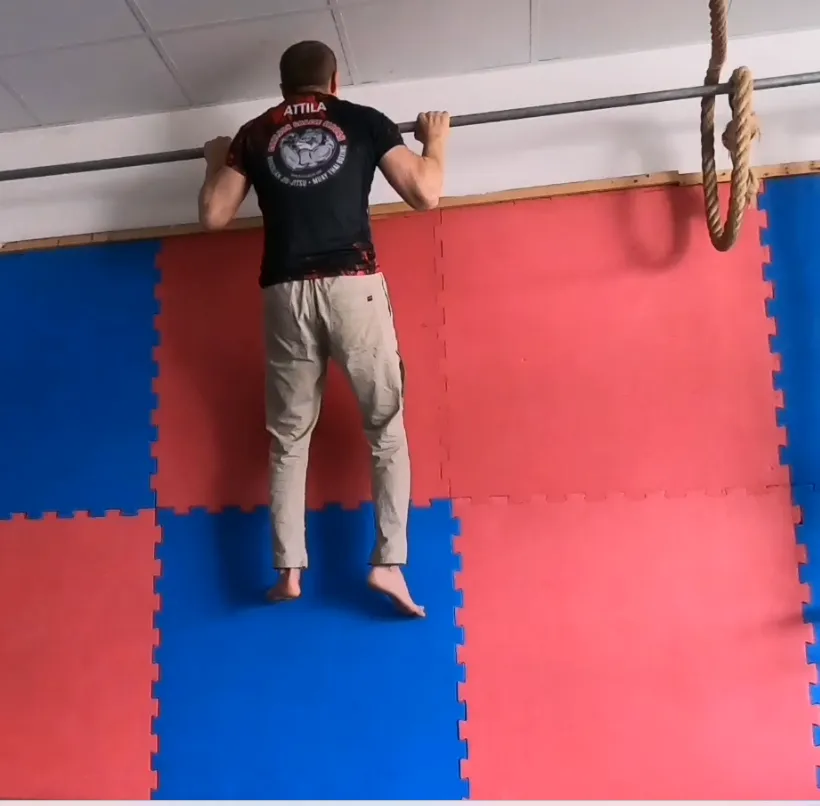Muay Thai Boxing
Muay Thai Boxing is an incredibly effective martial art that has gained global popularity as both a competitive sport and a self-defense system. Originating from Thailand, it focuses on rigorous body conditioning and fitness, preparing practitioners for the challenges of the ring.
Whether you want to boost your fitness or learn practical self-defense, Muay Thai offers diverse benefits with its striking techniques using fists, elbows, knees, and shins. As an experienced instructor, I provide personalized training programs for all skill levels—beginners to pros.
If you're ready to improve your health and achieve your goals, contact me today! Let’s explore how Muay Thai Boxing can elevate your fitness and personal growth.

Better Muay Thai Boxing
in 10 weeks

Claim Your 1-Week Free Trial!
Muay Thai Boxing


Mastering Pull-Ups: The Ultimate Guide to Strength and Preparation
Mastering Pull-Ups: The Ultimate Guide to Strength and Preparation
Pull-ups are often considered one of the most challenging bodyweight exercises, but they’re also one of the most rewarding. Whether you’re a fitness novice or a seasoned athlete, incorporating pull-ups into your workout routine can yield significant benefits, especially if your goals include weighted pull-ups or even single-arm pull-ups. In this blog, we’ll explore the mechanics of an effective pull-up, the advantages of incorporating specific techniques, and how you can prepare for advanced variations.
## The Pull-Up Technique: 10 Reps with Holds
To maximize the benefits of pull-ups, consider performing them with a structured approach: 10 reps, with a 1-second hold at the top and a 2-second descent. This method emphasizes control and strength throughout the entire movement.
### Breakdown of the Technique:
1. Start Position: Grip the bar with your palms facing away (or towards you for chin-ups) and hang with your arms fully extended.
2. Pull Up: Engage your back and core muscles as you pull yourself upward. Focus on smooth, controlled movements.
3. 1-Second Hold: At the top of the movement, where your chin is above the bar, pause for one second. This hold activates your muscles and increases time under tension, which is crucial for muscle growth.
4. 2-Second Descent: Slowly lower yourself back down over two seconds. This eccentric phase is vital for developing strength and control.
## Benefits of Pull-Ups
### 1. Full-Body Engagement
Pull-ups primarily target the upper body, focusing on muscles such as the latissimus dorsi, biceps, and trapezius. However, they also engage your core and even your legs to some extent, making them a fantastic full-body exercise.
### 2. Increased Grip Strength
A strong grip is essential for many athletic activities. Pull-ups help develop grip strength, which is beneficial not just for other exercises but also for daily activities.
### 3. Improved Posture
Strong back muscles contribute to better posture. Regularly performing pull-ups can help counteract the effects of prolonged sitting and slouching.
### 4. Functional Strength
Pull-ups mimic movements we often perform in real life, such as climbing or lifting ourselves up. This functional strength translates well into other sports and activities.
## Preparation for Weighted Pull-Ups
If you’re aiming to progress to weighted pull-ups, mastering regular pull-ups is crucial. Here’s why:
1. Building a Strong Base: Before adding weight, ensure you can perform multiple reps of standard pull-ups with proper form. This ensures your muscles can handle additional stress safely.
2. Enhancing Muscle Control: The 1-second hold at the top and the 2-second descent will improve your control and stability, which is essential when weight is added. This control is what will ultimately allow you to perform weighted pull-ups effectively.
3. Progressive Overload: Start with bodyweight pull-ups and gradually increase the weight as you get stronger. Your body needs to adapt to increased resistance, and mastering the standard pull-up is the first step.
## Preparing for Single-Hand Pull-Ups
Setting a goal for single-arm pull-ups (at least 60% of your body weight) requires not only strength but also technique and body awareness. Here’s how pull-ups play a role:
1. Strengthening the Lats: Single-arm pull-ups demand significant lat strength. Regular pull-ups help build this foundation, allowing you to progress toward one-arm variations.
2. Core Stability: Effective single-arm pull-ups require an engaged core to maintain balance. The controlled movements of your training will enhance your core strength and stability.
3. Muscle Imbalance Correction: Training both sides of your body with pull-ups will help prevent muscle imbalances, which can impede your progress when attempting single-arm variations.
## Conclusion
Pull-ups are a fundamental exercise that can dramatically improve your strength, posture, and overall fitness. By practicing them with structured techniques—like the 10 reps with holds—you can better prepare for advanced variations, including weighted pull-ups and single-handed pull-ups. Remember, progression takes time and consistency, so stay committed, and you'll reap the rewards of your hard work. Whether you’re looking to impress at the gym or just want to challenge yourself, mastering pull-ups is a journey worth taking!


